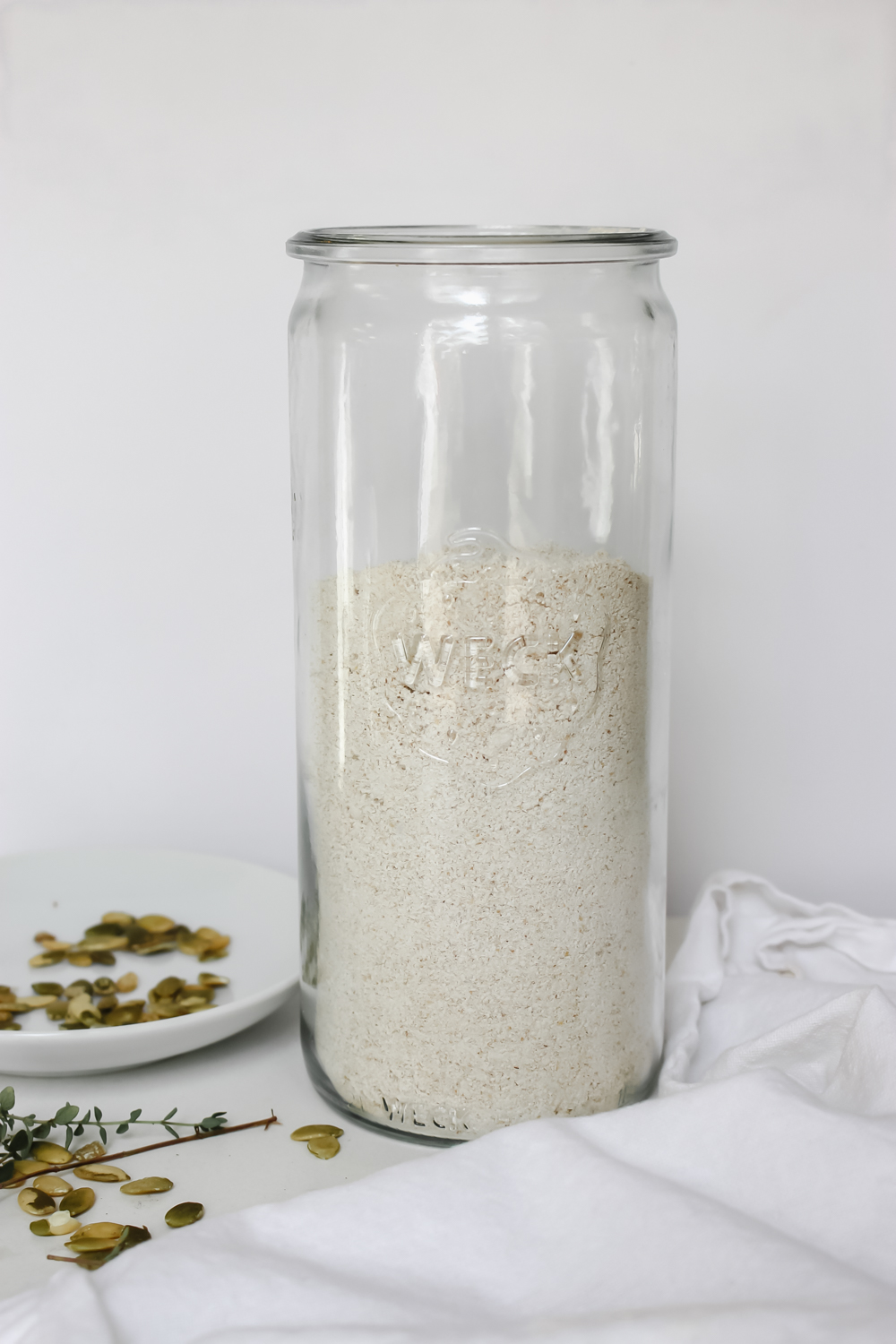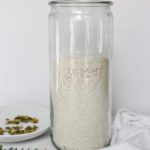You will come across a lot of oat flour in my recipes. It’s one of my favorite flours to use for gluten free baking as it is nice and dense, but still soft, and lends a subtle sweetness to baked goods. I usually use it in combination with almond flour or by itself, depending on what texture I’m going for.
Because it’s a whole grain, oats are protein packed and full of fiber. If you do as much baking as I do for your family, it’s a great plus to have so much nutrition packed in.
Best part? It’s a breeze whip up in seconds in your kitchen!


Did you know you can make your own oat flour at home? It is incredibly fast and easy, requiring only one ingredient and a blender or food processor. Once I started making my own oat flour I never looked back.
Here are some of my favorite recipes to get your started. As you can probably guess, there are lots more to come!
- Pumpkin Spice Latte Bread
- One-Bowl Gluten Free Banana Bread
- Raspberry Picnic Pie Bars
- Berry Zucchini Cake
DIY Oat Flour
Equipment
- High speed blender or Food Processor
Materials
- 1.5 cups Old fashioned rolled oats
Instructions
- Put your oats into your blender or food processor and blend, scraping sides as needed, for 15-30 seconds.
- A fine, powdery flour will form and when it does, you are done!



Ready for all the Oat Flour recipes you are going to stun us with
Lots more to come!! xx
Could not believe how easy this was to make! Used it in the zucchini berry cake, so good .
I’m so happy to hear this, it’s a favorite over here too!